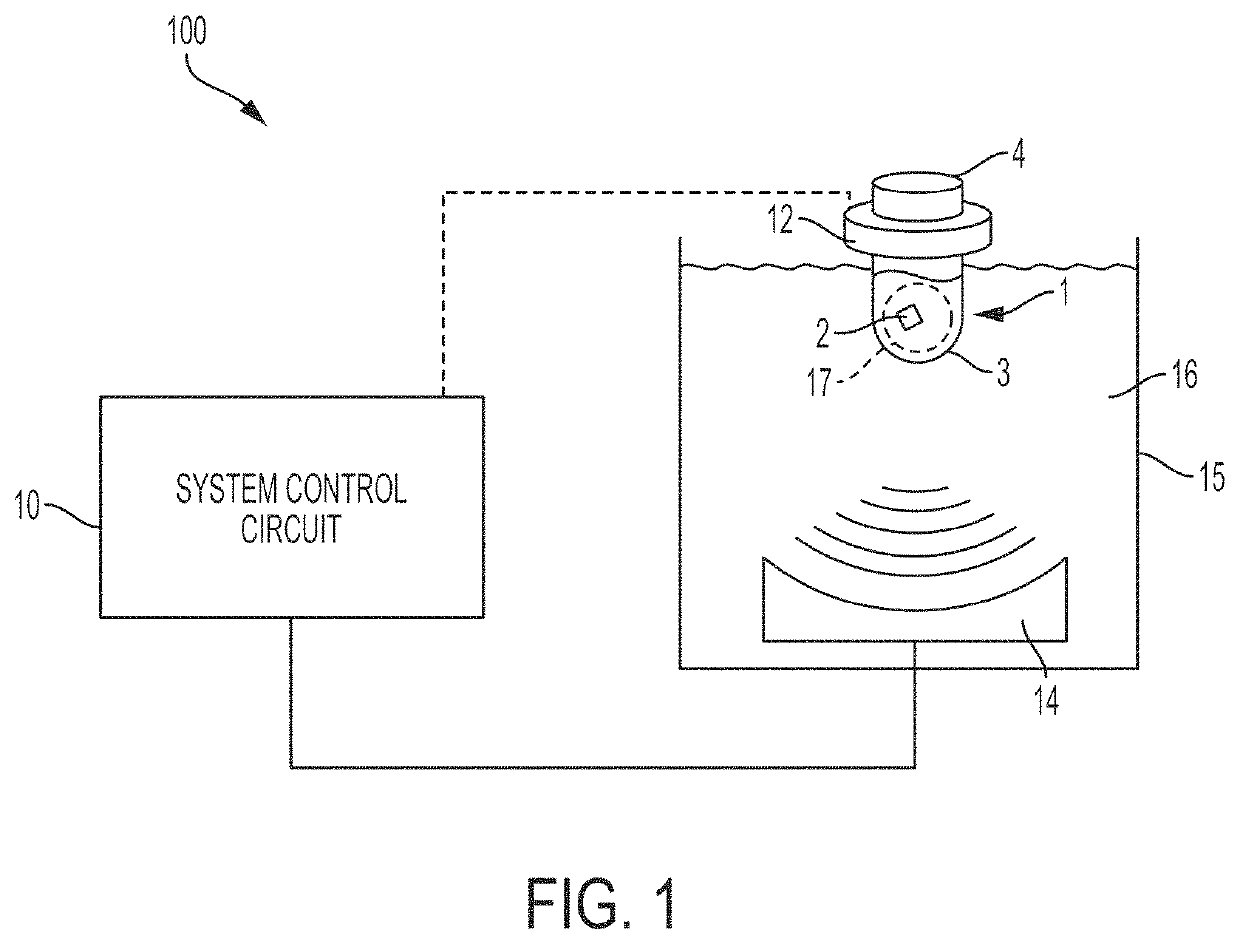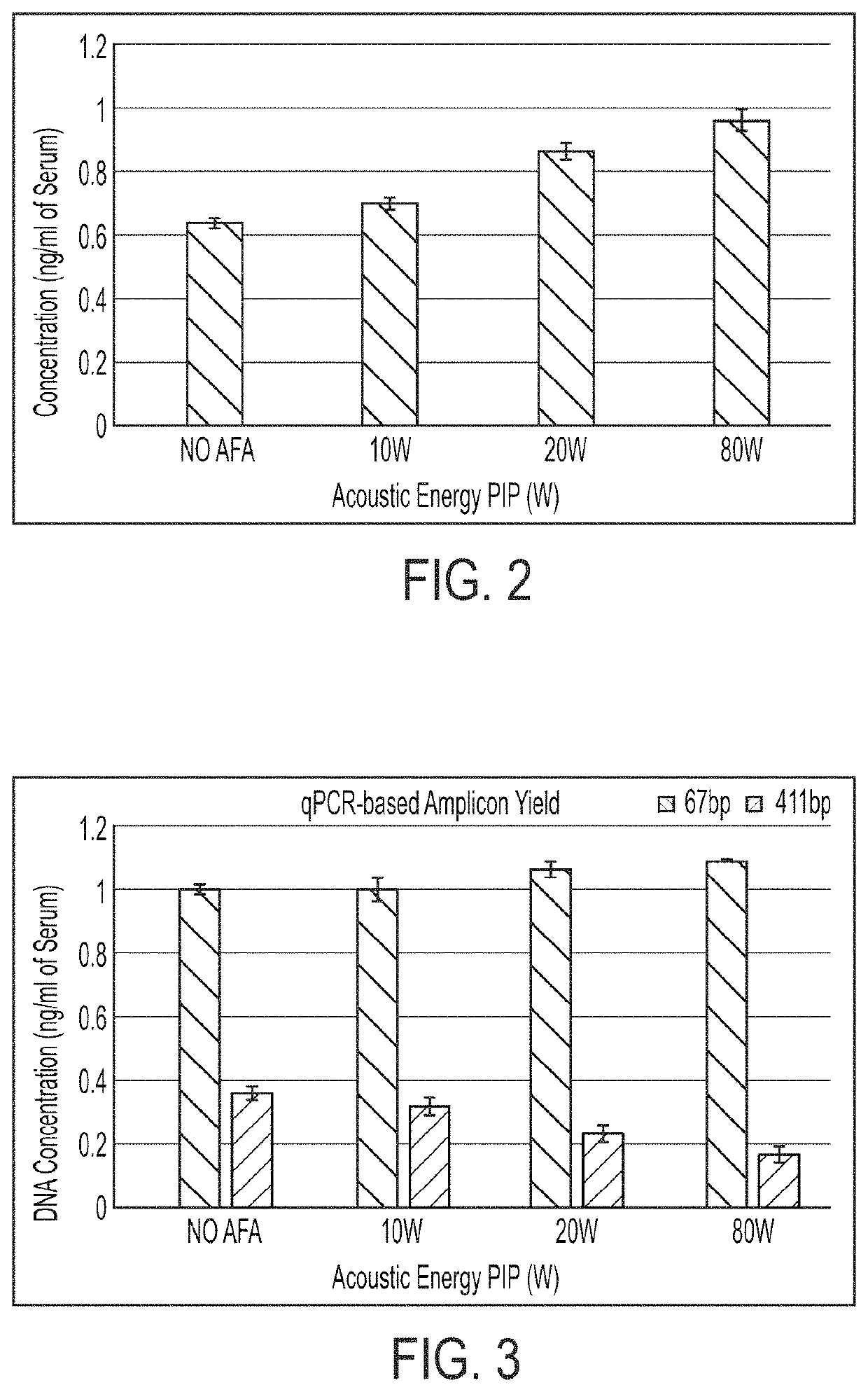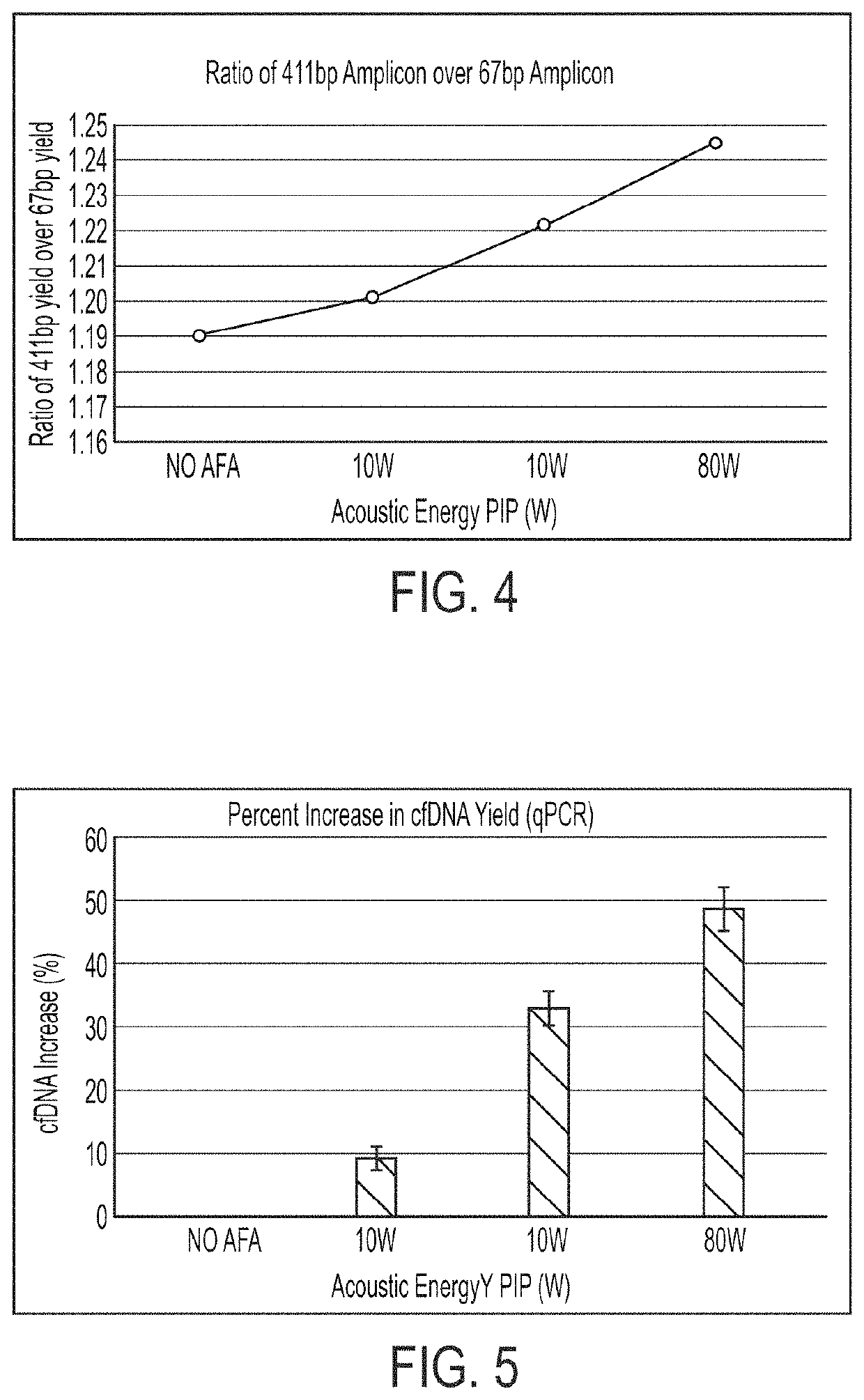Extraction of cfDNA from biological samples
a biological sample and extraction technology, applied in the field of acoustic energy processing of samples, can solve the problems of increasing the overall cfdna yield, and achieve the effect of increasing the risk of conditions
- Summary
- Abstract
- Description
- Claims
- Application Information
AI Technical Summary
Benefits of technology
Problems solved by technology
Method used
Image
Examples
Embodiment Construction
[0017]Aspects of the invention are not limited in application to the details of construction and the arrangement of components set forth in the following description or illustrated in the drawings. Other embodiments may be employed and aspects of the inventions may be practiced or be carried out in various ways. Also, the phraseology and terminology used herein is for the purpose of description and should not be regarded as limiting.
[0018]FIG. 1 shows a schematic block diagram of an acoustic treatment system 100 that incorporates one or more aspects of the invention and / or can be employed with one or more aspects of the invention. It should be understood that although embodiments described herein may include most or all aspects of the invention, aspects of the invention may be used alone or in any suitable combination with other aspects of the invention. In this illustrative embodiment, the acoustic treatment system 100 includes an acoustic energy source with an acoustic transducer ...
PUM
| Property | Measurement | Unit |
|---|---|---|
| width | aaaaa | aaaaa |
| frequency | aaaaa | aaaaa |
| frequency | aaaaa | aaaaa |
Abstract
Description
Claims
Application Information
 Login to View More
Login to View More - R&D
- Intellectual Property
- Life Sciences
- Materials
- Tech Scout
- Unparalleled Data Quality
- Higher Quality Content
- 60% Fewer Hallucinations
Browse by: Latest US Patents, China's latest patents, Technical Efficacy Thesaurus, Application Domain, Technology Topic, Popular Technical Reports.
© 2025 PatSnap. All rights reserved.Legal|Privacy policy|Modern Slavery Act Transparency Statement|Sitemap|About US| Contact US: help@patsnap.com



